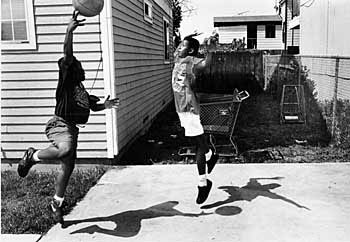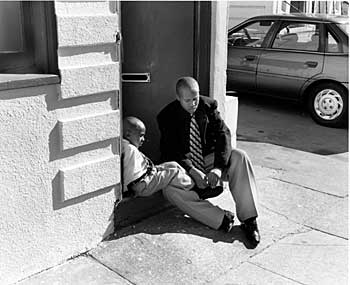|
HOME | SEARCH | ARCHIVE |
|
| |
|
07 February 2001 | Photographer Lewis Watts, senior lecturer in the Department of Architecture, has been documenting the black experience - in California, the urban Northeast, the deep South, the Caribbean and Mexico - for the past 25 years.
Watts' "Urban Footprints," a photo series exhibited at the Oakland Museum of California in 1998, depicted Oakland's residents and neighborhoods.
"While poverty, crime and the fruits of racism are present here," he says, "there is also a strong sense of family and pride in the community, which is reflected in institutions: churches, community gardens, parks, businesses and homes. There is also a strong sense of improvisation, as people use the materials and resources at hand to suit their needs."
Many black Americans came to the East Bay in the 1940s from the rural South, bringing with them customs, religious practices and modes of artistic expression.
Today, a half century later, Watts still finds, and documents, traces of the South in the streets of Oakland and other Bay Area cities.
"Many of these traces are African in origin: public expression of grief and celebration, the sense of neighborhoods as a village, and strong spiritual belief that is expressed visually," Watts says.
Lewis Watts' photos are part of the permanent collections of the San Francisco Museum of Modern Art; the Oakland Museum of California; Light Work (Syracuse, NY); The Smithsonian Institution; and the Studio Museum (Harlem, NY). He has taught at Berkeley since 1978.
More African-American
history month features:
Berkeley's
pioneering black students
Honoring trailblazing campus faculty
Home | Search | Archive | About | Contact | More News
Copyright 2001, The Regents of the University of California.
Produced and maintained by the Office of Public Affairs at UC Berkeley.
Comments? E-mail berkeleyan@pa.urel.berkeley.edu.

